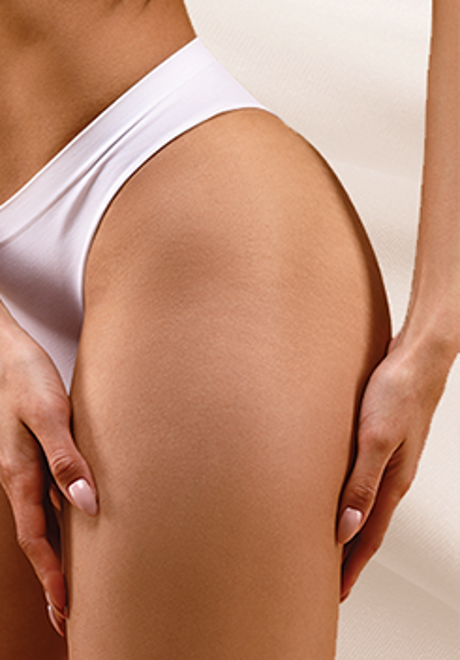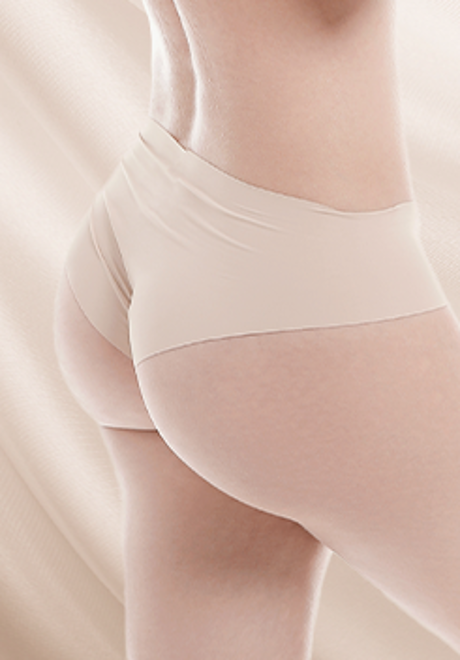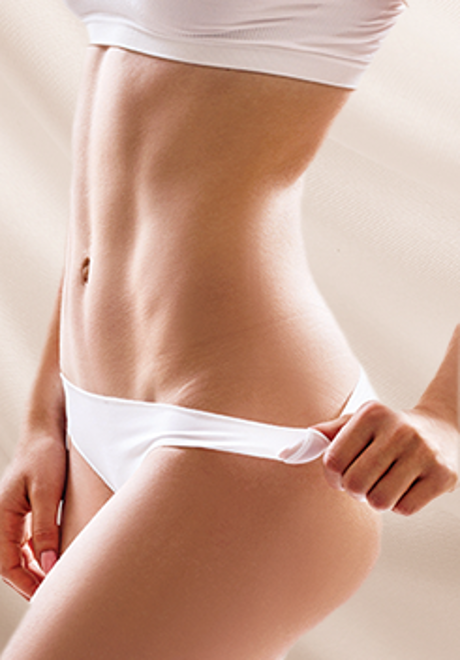What is liposuction?
Liposuction is the process of extracting stubborn fat deposits from the deep fat layer with the help of a small stainless steel tube called a cannula.
Before the fat removal process, specially prepared liquids are injected into the fat area to be absorbed to disintegrate the fat cells and shrink the vessels for bleeding reduction.
Why do we fatten up?
There are two types of fat layers surrounding our body:
- Subcutaneous (Surface) Fat
- Visceral (Deep) Fat
Subcutaneous fat
This layer is the fat just under our skin. It contributes to making our skin look beautiful when thin and regular.
Visceral fat
The deep fat layer, which lies just below the surface fat layer, is the layer responsible for storage in particular. When the calories we eat are more than the calories we consume, the nutrients are converted into fat and stored in this deep layer. In fact, when a person is born, the number of cells that will store fat in the body is genetically determined. For this reason, some people also have a fattening characteristic that comes from their families. The number of these fat cells, which are determined by the genetic structure, increases until puberty and the number does not change anymore. If the calorie diet continues, the existing cells swell by continuing to store fat even though their numbers do not increase. In this way, fat cells can expand infinitely.
Does fattening also have metabolic effects?
Fattening not only creates an aesthetically poor appearance, but also threatens one's health. Because fat cells secrete various substances (mediators and hormones) as well as storage. This leads to many problems such as the tendency to diabetes and menstrual irregularities, hair growth, increased estrogen levels in women, and decreased testosterone levels in men.
In which areas can liposuction be performed?
Hips
Abdominal Areas (belly)
Thigh, inner and outer
Knees, inner sides
Jowl and neck
Upper arm
Breast
Does fat regenerate in the areas where removed?
Although the size of fat cells changes when we gain or lose weight, the number remains the same. Thus, it is possible to regain weight with excessive nutrition after liposuction. With liposuction, we reduce the number of fat cells in that area by taking the fat cells out of the body. Therefore, even if you gain weight after a while, fat storage will be less in those areas.
It is important to remember that liposuction is not a weight loss procedure but a body contouring, the goal here is to give your body a better shape.
Liposuction surgery
Before liposuction, the excess fat cells of the patient are identified and marked by drawings while the patient is standing. After the appropriate anesthesia is given according to the area and size of the procedure to be performed, a specially prepared liquid is injected into the predetermined accumulation areas. This fluid provides pain control with local anesthetic and decreases bleeding with adrenaline. In addition, the pressure created in the region facilitates the vacuum.
At least two incisions around 1cm are made for each region. With the help of a cannula, the accumulated fat is vacuumed and removed in the desired amount.
In the end, the incisions are sutured, and special corsets are put on to reduce bleeding and leaks where the fat is removed and to prevent edema as much as possible.
Anesthesia method
In a limited area, local anesthesia will be sufficient along with relaxing drugs.
However, if liposuction is performed on a wide or multiple areas, general anesthesia is preferred.
Before operation
After consultation and agreement on the procedure date with your doctor, it is necessary to discontinue vitamins, food supplements, herbal medicines, herbal teas, and blood thinners from a week ago. Otherwise, they will cause bruises after the procedure.
How much fat can be removed during liposuction?
In principle, up to five liters of fat removal at a time is ideal. If more fat is taken, the time to stay in the hospital and the healing process will be extended and different medications will need to be given to the patient. Therefore, I do not approve of removing more than five liters at a time for aesthetic purposes.
Usually, a hospital stay follows the operation for one night. The patient can also choose to spend the night at home in low volume and/or single zone transactions. A special corset is worn which is required to be worn for at least three weeks unexceptionally to ensure that the shaped areas remain as desired and increase the effect. There may be a slight tingle after the procedure that will be over with painkillers. Depending on the process, the person may work with his corset in a few days. If the corset becomes wide due to shrinking afterward, it may be necessary to switch to narrower corsets.
Post operation
Liposuction bir zayıflama yöntemi değil, vücut şekillendirme yöntemidir. Göbeğiniz çıkacak kadar kilo aldıysanız, muhtemelen karın içinde de yani iç organlarınızın çevresinde de yağ depolanmıştır. Bu bölgelere liposuction uygulanması mümkün değildir. Yani öncelikle diyet yapmanız gereklidir. Bu süreç içinde liposuction size yardımcı olacak, ilk etapta hızlı kilo vermenizi sağlayacaktır. Ancak söylediğimiz gibi, bunu diyetle desteklemeniz şarttır. Bir seansta 10- 15kg liposuction yaptırmak ya da tek işlemle zayıflamaya çalışmak doğru ve güvenli değildir.
Is liposuction harmful?
Liposuction is not a risky operation for people who do not have additional diseases such as heart, hypertension, or diabetes.
The risk of anesthesia is also exceptionally low as it is applied to patients of average weight and generally younger than sixties.
Although it may be considered as risk-free, plastic surgeons should do the fat removal process, in a hospital environment with qualified medical conditions and within safety limits.
Interventions made under inappropriate conditions and/or by unqualified persons may cause all kinds of risks.
Fat removal is not a weight loss method
Liposuction is not a slimming method, but a body contouring. If you have gained enough weight to grow your belly, fat is probably stored in the abdomen, that is, around your internal organs as well. Fat removal is not possible in these areas, so you need to go on a diet first. Liposuction in the process will help you, allowing you to lose weight primarily. However, as we stated, you must manage it with diet. It is neither correct nor safe to have 10-15 kg liposuction in one seance by expecting weight loss with a single procedure.
Ual, vaser, laser liposuction, pal, what is the difference?
In all of these definitions, fragmented fat cells must be removed from the body by vacuum. In recent years, however, after the injection of special liquids, applications such as sound waves (ultrasound) and lasers have started to increase the fragmentation of fat cells. They are more effective than the classical method. However, the cost is high as these recent technologies require specialized devices.
What is vaser lipo?
VASER Lipo is today's newest, most advanced, and most effective liposuction method. Although VASER Lipo is theoretically the same as the classical method, the participation of ultrasound (sound wave) energy in the process increases efficiency.
After injecting medicated liquids into the fat tissue as expected in classical liposuction, the sound waves whose amount and strength are determined by the physician are applied to the entire tissue using the cannulas determined by the physician. This process separates the fat cells from each other by creating bubbles in the adipose tissue (does not detonate fat cells but disintegrates) and fats liquefy. The wavelength and frequency of the applied sound wave shall be in the proper range. In this way, while these tissues are affected, connective tissue, nerve and vascular structures, and blood vessels are not damaged.
In addition, the VASER system technology allows us sound wave implementation on the surface and performs more superficial liposuction than ever before. This has two main benefits:
- By applying a very superficial sound wave, it is possible to heat and stimulate the collagen and elastin fibers under the skin to enhance the amount of recovery in the skin. VASER allows the skin to recover faster and further than other methods and it becomes tight quickly and this increases the speed and efficiency of recovery.
- More superficial liposuction application enables more precise and detailed body contouring. Therefore, our goal is not only to minimize the volume of fat in certain areas but also to shape those areas in detail.
What is hi-def vaser lipo?
The development of VASER technology now allows us to perform more superficial and detailed liposuction. For suitable persons, body contouring is possible to form ideal anatomical lines with liposuction (High Definition VASER Liposuction).
Who is performable for hi-def vaser lipo?
Choosing the relevant applicant is important in the Hi-Def VASER Lipo procedure. It is not possible to perform Hi-Def to persons with no sports at all, with extreme skin laxity or a significant amount of fat in every area.
However, it is possible to perform Hi-Def to those with undesirable fat stores despite being engaged in active sports and willing to improve the definition, to give a "six-pack" appearance and clarify the muscle lines.
It is claimed on the internet that 12-15 liters of fat can be removed. Why aren't you performing that?
Recently, there have been some advertisements on social media asserting that 12-15 liters of fat can be removed in one session with local anesthesia. The patient can go home immediately and return to his/her normal life the day after this procedure.
I consider such a practice extremely dangerous. Because:
- If a person needs 12-15 liters of liposuction, this person is most likely obese and is not a candidate for liposuction. Liposuction is not intended to treat obesity. Liposuction aims to shape the body like a sculptor by taking stubborn fat. If a person is unable to lose weight by diet or other methods, she/he will regain that mentioned 12-15 liters soon after.
- In these people, the actual fat deposition is in the abdomen, around the organs. And these areas cannot be reached and corrected with liposuction. In other words, this swelling in your abdomen can not be corrected that way.
- Patient safety is at the forefront of plastic surgery. Performing more than 5-6 liters of liposuction pushes the safety limits and requires special follow-up and procedures. Moreover, it increases complication risks.
- It is not comfortable to perform such high-volume liposuctions with local anesthesia. Patients feel a lot of pain.
- It is extremely dangerous to go home immediately after such a procedure. Fluid electrolyte balance should be monitored in the hospital for at least 2-3 days. Blood replacements should be done if necessary.
- It may take quite a long time to return to normal life after such a procedure.
- Consequently, I do not perform such high-volume liposuction applications in my daily practice (except in very specific cases). These applications require special planning, preparations, and serious follow-up and treatments after the procedure.
Types of Body Aesthetic Surgery
There are different types of body aesthetics that can be applied depending on the type of problem experienced.




